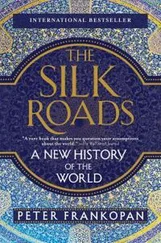Rosalind Miles - The Women’s History of the World
Здесь есть возможность читать онлайн «Rosalind Miles - The Women’s History of the World» — ознакомительный отрывок электронной книги совершенно бесплатно, а после прочтения отрывка купить полную версию. В некоторых случаях можно слушать аудио, скачать через торрент в формате fb2 и присутствует краткое содержание. Жанр: unrecognised, на английском языке. Описание произведения, (предисловие) а так же отзывы посетителей доступны на портале библиотеки ЛибКат.
- Название:The Women’s History of the World
- Автор:
- Жанр:
- Год:неизвестен
- ISBN:нет данных
- Рейтинг книги:5 / 5. Голосов: 1
-
Избранное:Добавить в избранное
- Отзывы:
-
Ваша оценка:
- 100
- 1
- 2
- 3
- 4
- 5
The Women’s History of the World: краткое содержание, описание и аннотация
Предлагаем к чтению аннотацию, описание, краткое содержание или предисловие (зависит от того, что написал сам автор книги «The Women’s History of the World»). Если вы не нашли необходимую информацию о книге — напишите в комментариях, мы постараемся отыскать её.
The Women’s History of the World — читать онлайн ознакомительный отрывок
Ниже представлен текст книги, разбитый по страницам. Система сохранения места последней прочитанной страницы, позволяет с удобством читать онлайн бесплатно книгу «The Women’s History of the World», без необходимости каждый раз заново искать на чём Вы остановились. Поставьте закладку, и сможете в любой момент перейти на страницу, на которой закончили чтение.
Интервал:
Закладка:
Women enjoyed physical freedoms.
The respect accorded to women within marriage mirrors the autonomy they frequently enjoyed before it. In the early classical period Greek girls led a free, open-air life, and were given athletic and gymnastic training to promote both fitness and beauty. In Crete, chosen young women trained as toreras to take part in the ritual bull-leaping, while Ionian women joined in boar-hunts, nets and spears at the ready. Across thousands of Attic vases (‘Grecian urns’ to Keats), girl jockeys race naked, or dance and swim unclothed through millennia of silence and slow time. The freedom of the young unmarried women was so marked in Sparta that it even caused comment in the other city-states of Greece. Euripides was not the only Athenian to be scandalized:
The daughters of Sparta are never at home!
They mingle with the young men in wrestling matches,
Their clothes cast off, their hips all naked,
It’s shameful!
The strength and athletic ability of these young women was not simply fostered for fun, as the story of the Roman heroine Cloelia shows. Taken hostage by the Etruscan king Lars Porsenna during an attack on Rome in the sixth century B.C., she escaped, stole a horse and swam the Tiber to get back safely to Rome. Even though the Romans promptly handed her back, Cloelia’s courage won the day; for Lars Porsenna was so impressed by this feat that he freed her and all her fellow hostages as a mark of honour. 29
Regiments of women fought as men.
The hardening of young women’s bodies by sport and the regular practice of nudity had wider implications than these sporadic acts of personal daring. Throughout the ancient world there is scattered but abundant evidence of women under arms, fighting as soldiers in the front-line engagements that conventional wisdom decrees have always been reserved for men. Ruling queens led their troops in the field, not as ceremonial figureheads but as acknowledged and effective war-leaders: Tamyris, the Scythian warrior queen and ruler of the Massagetae tribe of what is now Iran, commanded her army to victory over the invading hordes of Cyrus the Great, and had the great king put to death in revenge for the death of her son in battle. Ruling women also commanded military action at sea, as the Egyptian queen Cleopatra did at the battle of Actium, where her uncharacteristic failure of nerve cost her the war, the empire, her lover Antony and her life. Warrior queens were particularly celebrated in Celtic Britain, where the great goddess herself always bore a warlike aspect. The pre-Christian chronicles contain numerous accounts of female war-leaders like Queen Maedb (Maeve) who commanded her own forces, and who, making war on Queen Findmor, captured fifty of the enemy queen’s women warriors single-handed at the storming of Dun Sobhairche in County Antrim. 30
The fighting women of the Celts were in fact legendary for their power and ferocity – an awestruck Roman historian, Dio Cassius, describes Boudicca, queen of the Iceni, as she appeared in battle, ‘wielding a spear, huge of frame and terrifying of aspect’. 31The same belligerence was remarked in the female squaddies: another Roman chronicler who had seen active service warned his compatriots that a whole troop of Roman soldiers would not withstand a single Gaul if he called his wife to his aid, for ‘swelling her neck, gnashing her teeth, and brandishing sallow arms of enormous size she delivers blows and kicks like missiles from a catapult.’ 32
Stories of women fighters have always been most persistent around the Mediterranean and the Near East, and from earliest times written and oral accounts record the existence of a tribe of women warriors who have come down to history as the Amazons. The absence of any ‘hard’ historical data (archaeological remains of a city, or carved inscriptions detailing famous victories, for instance) means that these accounts have been treated as pure myth or legend, ‘nothing more than the common travellers’ tales of distant foreigners who do everything the wrong way about’, as the Oxford Classical Dictionary dismissively explains. Feminist historians of the twentieth century have also been uneasy with the Amazon story, finding it an all-too-convenient reinforcement of history’s insistence on the inevitability of male dominance, as the Amazon women were always finally defeated and raped/married by heroes like Theseus. Another problem lies in the evidently false and fanciful interpretation of the name ‘Amazon’, from Greek a (without) and mazos (breast). This is now known to be linguistically spurious as well as anatomically ridiculous – how many women have a right breast so large that they cannot swing their arm? – and consequently the whole idea of the tribe of women who amputated their breasts in order to fight has been discredited.
But wholesale dismissal of the subject is to throw out the baby with the bathwater. The written accounts, ranging from the gossip of story-tellers to the work of otherwise reliable historians, are too numerous and coherent to be ignored; and anything which could engage the serious attention and belief of writers as diverse as Pliny, Strabo, Herodotus, Aeschylus, Diodorus and Plutarch holds a kernel of hard information that later generations have too readily discarded. The body of myth and legend also receives historical support from the numerous rituals, sacrifices, mock-battles and ceremonials of later ages confidently ascribed to Amazon origins by those who practised them, as commemorations of key episodes of their own past history. 33
As with the wider question of matriarchy, to which the concept of a self-governing tribe of powerful women so clearly relates, the way forward lies in the synthesis of myth and legend with the incontrovertible events of ‘real’ history. Women fought, as war-leaders and in the ranks; women fought in troops, as regular soldiers; and the principal symbol of the Great Goddess, appearing widely throughout the Mediterranean and Asia Minor, was the double-headed battle axe or labrys . There are, besides, innumerable authenticated accounts like that of the Greek warrior-poet Telessilla, who in the fifth century B.C. rallied the women of Argos with war-hymns and chants when their city was besieged. The Argive Amazons took up arms, made a successful sally and after prolonged fighting, drove off the enemy, after which they dedicated a temple of Aphrodite to Telessilla, and she composed a victory hymn to honour the Great Mother of the gods. 34Marry this and the mass of similar evidence of Amazon activity among women, and it is clear that, as with matriarchy, there may have been no one Amazon tribe, but the historical reality of women fighting can no longer be doubted.
Women claimed the ultimate freedom.
The physical autonomy expressed by these women through sport and military activity speaks of a deeper freedom, and one that later ages found most difficult to tolerate or even adequately explain. Customs varied from country to country and tribe to tribe, but it is evident that women at the birth of civilization generally enjoyed a far greater freedom from restraint on their ‘modesty’ or even chastity than at any time afterwards. For many societies there was no shame in female nakedness, for instance, and this did not simply mean the unclothed body of a young girl athlete or gymnast. Adult women in fact practised regular cult-nakedness, frequetly disrobing for high ceremonials and important rituals either of a solemn or a joyful kind. The evidence of Attic vases dating from the ninth and eighth centuries B.C. shows that women mourners and usually the widow herself walked naked in the funeral cortège of any Athenian citizen.
Читать дальшеИнтервал:
Закладка:
Похожие книги на «The Women’s History of the World»
Представляем Вашему вниманию похожие книги на «The Women’s History of the World» списком для выбора. Мы отобрали схожую по названию и смыслу литературу в надежде предоставить читателям больше вариантов отыскать новые, интересные, ещё непрочитанные произведения.
Обсуждение, отзывы о книге «The Women’s History of the World» и просто собственные мнения читателей. Оставьте ваши комментарии, напишите, что Вы думаете о произведении, его смысле или главных героях. Укажите что конкретно понравилось, а что нет, и почему Вы так считаете.










